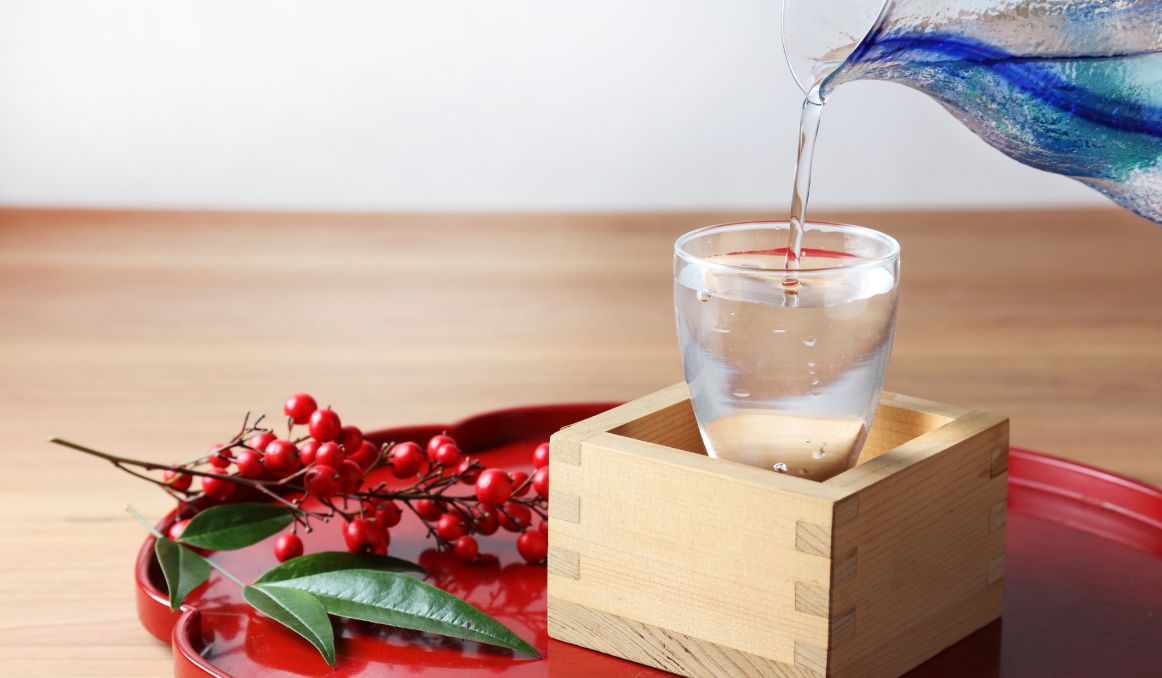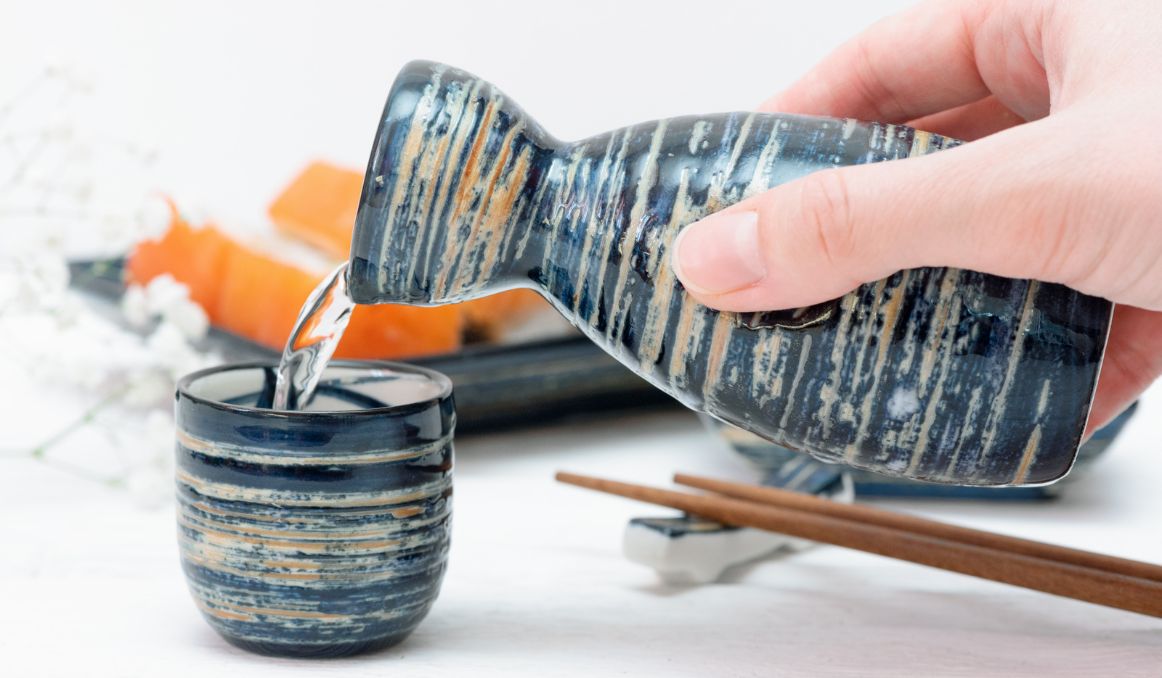Does Sake Have Sulfites? Your Complete Guide
If you’ve been struggling with wine headaches, or you’re severely allergic, you may be interested in finding a wine you can drink without sulfites.
Enter sake.
A Japanese rice wine, sake has no sulfites, which means no allergic reaction for you.
Yay!
But wait, you might still get those headaches.
Why?

Sulfites
First, let’s talk about sulfites.
Sulfites are naturally occurring in many foods and have been used as preservatives for centuries.
How did ancient civilizations know about sulfites for preserving food?
Sulfites are produced by yeast.
So, essentially, the drying out and fermenting processes naturally welcome yeast, and have pretty much since the beginning of civilization. Part of the joy of the fermentation and preservation process, beyond alcohol, is the sulfites.
The same yeast that ferments, creating alcohol from sugar, produces sulfites, and those sulfites will then inhibit the growth of toxic yeast, bacteria, and mold.
We see acted out in alcoholic beverages all the time: the yeast creates the alcohol and then the alcohol reaches a high enough point to kill off the yeast.
The same goes for sulfites.
It is a kind of self-preservation situation.
Today, sulfites are created in laboratories specifically to be used as food additives. They are primarily used to slow browning and maintain richness of color.
They keep shrimp pink, salad bars in restaurants fresh, and wine red.
Thus, while they are naturally occurring in many foods and beverages, and have been for centuries, scientists have found a way to extract those sulfites from the fermentation process and add them to other foods where they would not naturally occur.
Allergies
It is currently calculated that about 1% of the population has a severe allergy to sulfites. Ingestion of sulfite in those allergic can result in an asthma attack, anaphylactic shock, vomiting, and other allergic reactions.
We typically see sulfite allergies in those with asthma, and it will be diagnosed by a doctor.
For those with a legitimate allergy, you will have to check labels for anything that contains the following:
- Sulfur dioxide
- Sodium bisulfite
- Potassium bisulfite
- Potassium metabisulfite
- Sodium metabisulfite
- Sodium sulfite
And if you do experience a severe reaction such as wheezing or extreme stomach pain after ingesting sulfites, seek immediate medical attention.
Sulfite Sensitivity
It is critical to note here that a severe allergic reaction is quite distinct from a sensitivity, and sensitivities are very hard to diagnose.
Especially with sulfites, because they are in so many foods.
The most common complaint from those who suspect they have a sulfite sensitivity is a headache.
Many will say they have a headache after they drink wine, and they conclude, largely thanks to the internet and Google searches, that it was the sulfites in the wine that caused the headache.
But not so fast!
Science has yet to find that sulfites cause headaches, and indeed, it may simply be the alcohol in your wine that is causing the headache.
And if you were to say “well beer does not give me a headache,” then it is definitely not the sulfites, because beer also has sulfites.
Remember, sulfites come from yeast. Beer is made with yeast.
So, it could be something else in wine you are sensitive to, but it is likely not the sulfites.
Which is a good thing! At least you don’t have to worry over every single label on every single food, which is a trial every person with a severe food allergy wishes they could avoid, no doubt.
Sake

If you do have a severe allergy, however, and you are looking for an alcoholic beverage to enjoy without sulfites, sake may be the answer to your prayer.
How is it possible that sake does not have sulfites when it is made through the fermentation process, just like beer and wine?
The answer lies right there in that fermentation.
You see, sake is fermented differently than most other alcohols.
How Sake Is Made
First, sake is made from a very specific rice, known as sake rice. It has white starch at its heart, and a transparent fat and protein layer on the outside.
The rice is milled, or polished, down to remove the outside shell and make it more water absorbent. When all is said and done, perhaps 50% of the original grain of rice is left.
Then the rice is soaked and steamed in water to make it soft.
Finally, a fungus called “koji” is spread across the top of the rice, as it is laid out flat over a hard surface, which converts the starch into sugar. The rice is then steamed again and introduced to some lactic acid bacteria, which creates an ideal breeding ground for yeast.
Finally, the rice is left out for yeast to convert the sugars into alcohol.
It is because of this long process, including the koji and the lactic acid bacteria, that a much higher alcohol volume is produced, sometimes above 20% ABV, and sulfites are not created, leaving all of the preservation work to the alcohol to do.
Headaches?
So, if you have a sulfite allergy, sake may be a great source of alcohol for you. There are many amazing options to choose from, and you can have fun exploring them all.
But, if you have a sensitivity, and you think it is the sulfites in wine that give you headaches, you may find you get those same headaches from sake, discovering that it was indeed the alcohol all along that is causing inflammation in your head.
Only time will tell.
If that is the case and all alcohol gives you headaches, your best bet is to stay hydrated before, during, and after you drink, which will greatly reduce inflammation.
Cheers!
Passionate about yeast fermentation and all the wonders it can do? So are we! If you’re interested in finding out how you can use our technology to control fermentation and monitor your yeast, save work hours and improve the cost-efficiency of your business, drop us a line at [email protected]
Also, check out these product pages, if you’re into beer or wine making:
- Oculyze BB 2.0 (Better Brewing) Yeast Cell Counter App + Hardware
- Oculyze FW (Fermentation Wine) Yeast Cell Counter App + Hardware
…or our custom solution page for other use cases (yours included):
Sources:


